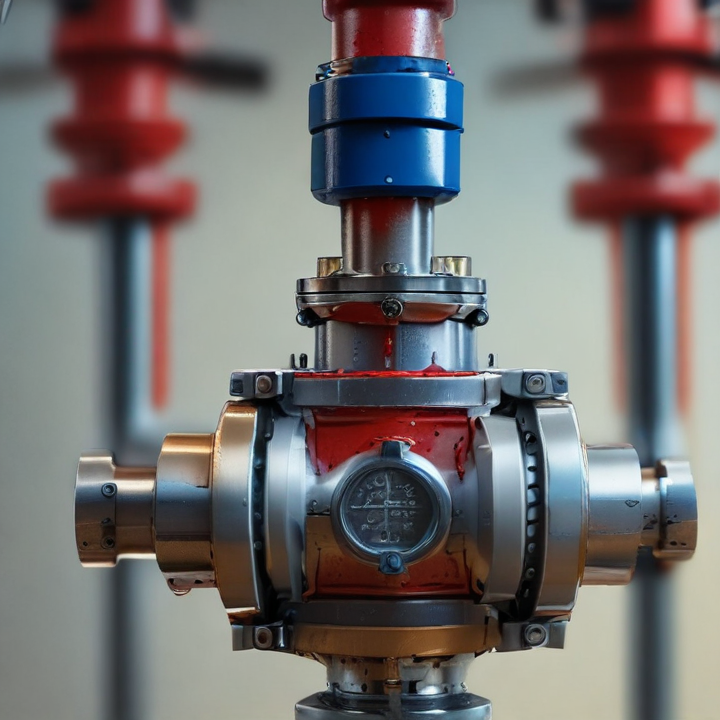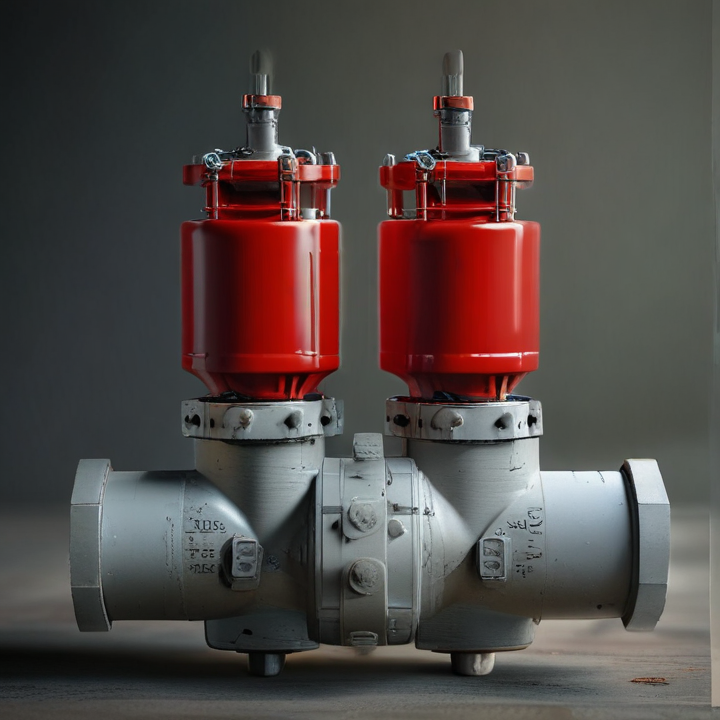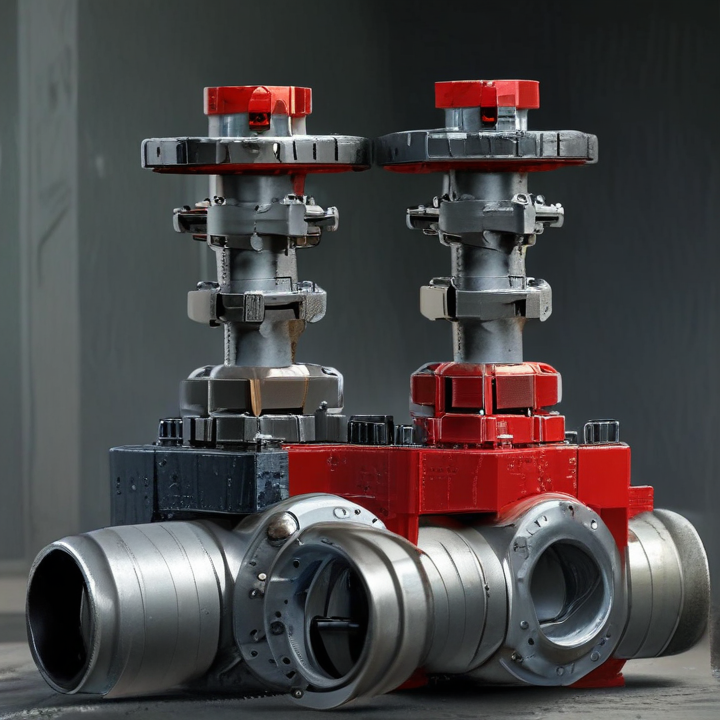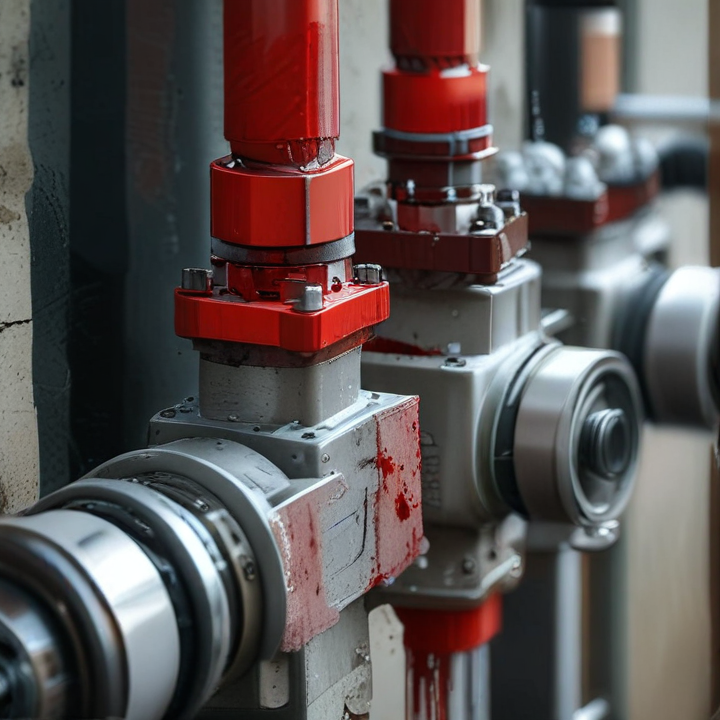double block and bleed valves Safety Certifications
Double block and bleed (DBB) valves are critical in pipelines and process industries for isolating sections of a system to ensure safe maintenance, operational efficiency, and emergency control. Ensuring that these valves meet rigorous safety standards is crucial for protecting both personnel and equipment. Here are some key safety certifications for DBB valves:
1. API 6D: This certification provided by the American Petroleum Institute (API) specifies the requirements for the design, manufacturing, testing, and documentation of ball, check, gate, and plug valves for pipeline applications. It’s widely recognized in the oil and gas industry.
2. ISO 9001: This international standard ensures that DBB valves are produced following strict quality management principles. It focuses on meeting customer requirements and enhancing satisfaction through continuous improvement processes.
3. API 6A: Also from the American Petroleum Institute, this certification applies to DBB valves used in wellhead and Christmas tree equipment, specifying stringent quality, design, and testing requirements.
4. Fugitive Emissions Certifications (ISO 15848 or API 641): These standards are crucial for valves used in environments sensitive to emissions. They ensure that DBB valves maintain a high level of sealing integrity to prevent gas or liquid leaks.
5. PED (Pressure Equipment Directive) 2014/68/EU: This European Union directive applies to the design and manufacture of pressure equipment, which includes DBB valves. It ensures that the valves can safely withstand specific pressure conditions.
6. SIL (Safety Integrity Level) Certification: According to IEC 61508/61511, this certification ensures that DBB valves are capable of performing their safety functions under defined conditions. It is crucial for systems where valve failure could result in hazardous situations.
7. CE Marking: Ensures compliance with EU safety, health, and environmental protection standards. DBB valves bearing the CE mark can be traded freely within the European Economic Area (EEA).
These safety certifications demonstrate a commitment to high manufacturing standards, operational safety, and environmental protection, ensuring that DBB valves perform reliably under demanding conditions.
List Reference Technical Parameters of “double block and bleed valves”
Double block and bleed (DBB) valves are critical components used to ensure positive isolation in pipelines, particularly in the oil, gas, and chemical industries. Below are the key reference technical parameters for DBB valves:
1. Pressure Ratings: They are designed to handle a wide range of pressures, commonly up to 20,000 psi, depending on the valve size and material.
2. Temperature Ratings: These valves can operate over a wide temperature range, typically from -50°C to 400°C, depending on the selected materials of construction.
3. Valve Types:
– Ball Valves: Effective for full shut-off applications, offering tight sealing.
– Needle Valves: Provide fine control of flow and pressure.
– Gate Valves: Suitable for on/off control.
4. Materials of Construction:
– Body and Bonnet: Typically made from stainless steel, carbon steel, or alloy materials.
– Seals and Seats: Often manufactured from PTFE, PEEK, or elastomeric materials for high chemical resistance and temperature endurance.
5. End Connections:
– Flanged: Commonly in ANSI/ASME standards.
– Threaded: NPT standards for ease of installation.
– Welded: For high-pressure applications requiring secure connections.
6. Size Range: They commonly range from 1/2 inch to 36 inches, suitable for various application needs.
7. Leakage Classifications: Compliance with international standards like ISO 5208 for leakage, ensuring tight shut-off performance.
8. Actuation Options: Manual, pneumatic, and hydraulic actuators are available, offering versatile control options.
9. Applications: Primarily in isolating sections of pipelines, sampling, testing pressure gauges, and systems requiring zero leakage.
Understanding these parameters helps in selecting the correct DBB valve for a specific application, ensuring operational safety, and efficiency. Always refer to manufacturers’ datasheets for specific product capabilities.
List Product features of “double block and bleed valves”
Double block and bleed (DBB) valves are designed to ensure high integrity isolation, critical in various industrial applications, particularly in the oil, gas, and petrochemical sectors. Here’s a concise list of their product features within a 300-word limit:
1. Dual Isolation: Incorporates two isolation valves (blocks) in series, offering redundant sealing to prevent leakage and ensuring absolute isolation.
2. Bleed Valve: Situated between the two block valves, it enables the cavity to be bled or drained, verifying the integrity of the seals and facilitating maintenance without interrupting the process.
3. High-Pressure Performance: Designed to withstand high-pressure environments, DBB valves are often constructed from robust materials like stainless steel or alloy steels to ensure durability and reliable performance.
4. Compact Design: Combining multiple valves into a single assembly reduces space and weight, streamlining installation and minimizing potential leak paths compared to traditional valve configurations.
5. Safety and Reliability: Enhances operational safety by providing a means to safely depressurize sections of pipework, reducing the risk of accidental releases when performing maintenance or repairs.
6. Multiple Configurations: Available in various configurations, including ball-valve, needle-valve, and globe-valve types, each suited to different applications and fluid types.
7. Ease of Maintenance: Featuring design elements like threaded or bolted connections, DBB valves allow for easy access and replacement of components, simplifying maintenance operations.
8. Versatile Applications: Suitable for both onshore and offshore environments, including subsea applications, adding versatility to their use cases across different operational settings.
9. Compliance with Standards: Typically designed and manufactured to meet or exceed industry standards like API, ASME, and ISO, ensuring they adhere to stringent quality and safety requirements.
10. Leak Detection: The bleed valve can be used for leak detection, allowing operators to confirm the effectiveness of the block valves without shutting down the entire system.
By integrating these features, double block and bleed valves provide enhanced isolation, safety, and efficiency, making them an essential component in critical industrial applications.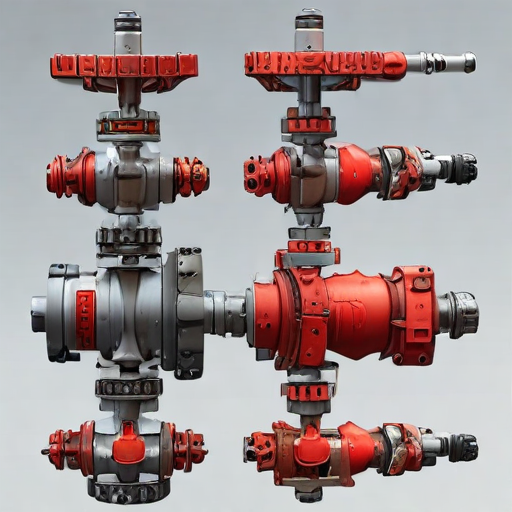
List Various Types of “double block and bleed valves”
Double block and bleed (DBB) valves are crucial for providing isolation in piping systems, ensuring safe maintenance and operation. Here’s a list of various types of DBB valves:
1. Single Unit DBB Valves:
– Trunnion Mounted Ball DBB Valves:
Equipped with a fixed ball, these provide secure sealing from both upstream and downstream sides, ideal for high-pressure applications.
– Floating Ball DBB Valves:
Feature a free-floating ball between the seats, ensuring a tight seal, suitable for low and medium-pressure applications.
– Gate DBB Valves:
Use a gate to block the flow, providing robust sealing, commonly used in oil and gas industries.
2. Modular DBB Valves:
– Integral DBB Valve (Monoblock):
Compact design with two separate seals and a bleed valve within a single body, reducing leakage points.
– Split-Body DBB Valves:
Consist of multiple pieces bolted together. These can handle higher pressure and larger sizes than monoblock types.
3. Plug DBB Valves:
– Twin Isolation Plug Valves:
Utilize two plugs in one body, providing primary and secondary isolation with a bleed valve in between.
– Lubricated Plug Valves:
Have a lubrication system that injects sealant to facilitate tighter sealing, often used in challenging applications like harsh chemicals.
4. Butterfly DBB Valves:
– These are less common but use a disc mechanism to isolate the flow. They are lightweight and take up less space.
5. Needle DBB Valves:
– Typically used in instrumentation applications, these allow for precise control and isolation of flow in high-pressure systems.
6. Diaphragm DBB Valves:
– Employ a flexible diaphragm to isolate the fluid, ideal for sanitary and corrosive environments.
Each type is suited for different industries and applications based on factors like pressure, temperature, and the nature of the fluid being handled.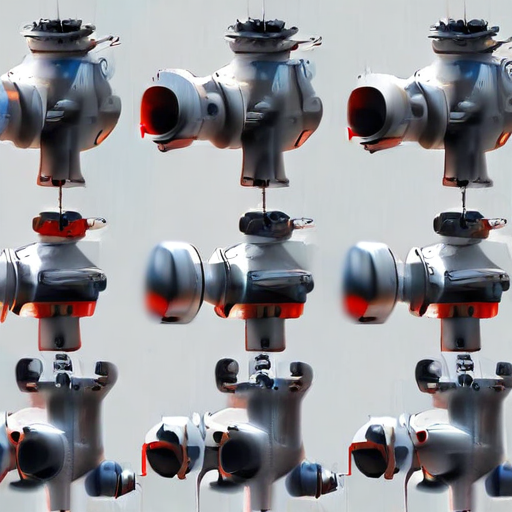
List Application of “double block and bleed valves”
Double Block and Bleed (DBB) valves are critical components in various industrial applications due to their ability to isolate sections of a piping system, ensuring both safety and system integrity. Here are some of their primary applications:
1. Pipeline Isolation: DBB valves are used to isolate sections of a pipeline for maintenance, repair, or other operational activities. They provide a high level of safety by ensuring no process fluid leaks into the section being worked on.
2. Instrument Isolation: In process control, DBB valves allow instruments like pressure gauges and transmitters to be calibrated, maintained, or replaced without shutting down the entire system.
3. Sampling: DBB valves facilitate the safe and efficient extraction of process samples for quality control and analysis without interrupting the main process flow.
4. Pressure Relief Systems: They are used to isolate and bleed off pressure relief systems, ensuring that pressure relief devices such as safety valves can be maintained or tested without halting operations.
5. Chemical Injection Systems: DBB valves ensure safe and controlled injection of chemicals into a processing system, preventing backflow and allowing for maintenance without system downtime.
6. Flow Meter Proving: In metering systems, DBB valves enable the isolation of flow meters during proving operations, ensuring accurate measurement and system integrity.
7. Tank Isolation: In storage facilities, DBB valves can isolate tanks from the transfer lines during filling or emptying operations to prevent contamination or mixing of fluids.
8. Test Points: They are used to create test points in piping systems, where sections can be isolated and tested for pressure, flow, or contamination without affecting the overall system.
9. Fuel Systems: In aerospace or marine applications, DBB valves provide fail-safe isolation for fuel systems to ensure no mixing of different fuel types or accidental fuel discharge.
These applications underline the importance of DBB valves in enhancing operational safety, efficiency, and reliability across various industries.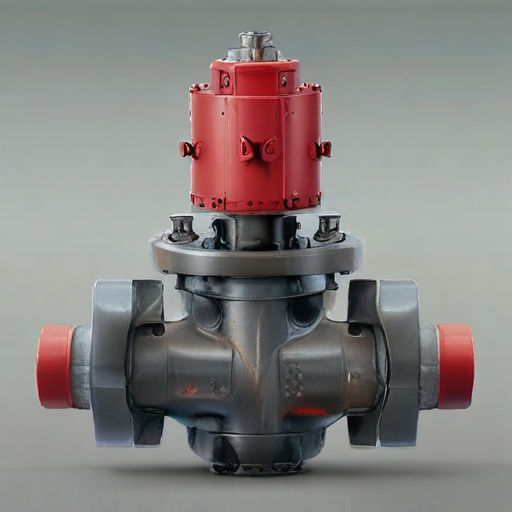
List Buyer Types of “double block and bleed valves”
Double block and bleed valves (DBBVs) are crucial components in various industrial applications. They serve to isolate sections of pipelines, ensuring safe maintenance and preventing leakage. The main buyer types for DBBVs include:
1. Oil & Gas Industry:
– Upstream Operations:
– Used in drilling platforms and exploration sites for isolating sections of pipelines.
– Midstream Operations:
– Critical for transport pipelines and storage facilities to prevent cross-contamination and ensure safety.
– Downstream Operations:
– Utilized in refineries and petrochemical plants for both maintenance and operational efficiency.
2. Chemical Industry:
– Employed in chemical processing plants to isolate sections for safety and to facilitate repairs without complete shutdowns.
3. Power Generation:
– Essential in power plants, including nuclear, coal, and gas, to manage fluid and gas flow securely for maintenance and operational segregation.
4. Pharmaceutical Industry:
– Used in drug manufacturing facilities to prevent contamination and ensure a sterile production environment.
5. Water & Wastewater Treatment:
– Utilized to manage the flow in treatment facilities ensuring safe and efficient operation and maintenance.
6. Maritime:
– Critical for ship fuel systems and ballast water management to prevent environmental contamination and ensure vessel safety.
7. Food & Beverage Industry:
– Applied in manufacturing plants to secure sanitary conditions and prevent product contamination.
8. HVAC Systems:
– Incorporated in large-scale HVAC systems for building management to isolate and control fluid flows.
9. Mining Industry:
– Used in mines to handle slurry and prevent hazardous material leaks, maintaining operational safety.
10. Aerospace:
– For ground support equipment and fueling systems, ensuring high safety standards in fuel and pneumatic management.
Each sector values DBBVs for their ability to enhance safety, reliability, and maintainability of critical systems.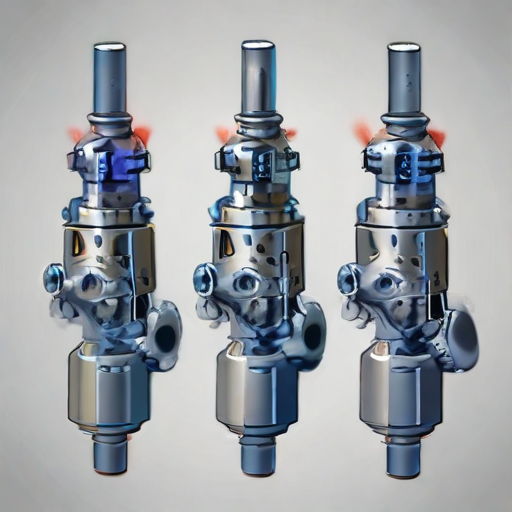
List “double block and bleed valves” Project Types for Different Industries
Double block and bleed (DBB) valves are pivotal in ensuring system integrity, especially for isolating sections, venting trapped pressure, and providing safe maintenance conditions. Here’s a rundown of project types across various industries where DBB valves are integral:
Oil & Gas
– Offshore Platforms: Critical for subsea and topside operations, ensuring isolation of the pipeline sections.
– Refineries: Used in different units such as distillation, cracking units, and loading/unloading operations to prevent cross-contamination.
– Pipeline Projects: For isolating and venting sections during maintenance, ensuring pipeline integrity.
Petrochemical
– Chemical Processing Plants: Ensuring precise control and isolation during chemical reactions and processes to avoid hazardous situations.
– Storage Terminals: Safe handling of hazardous substances during loading/unloading.
Power Generation
– Thermal Power Plants: In steam and water circuits for safe maintenance and operational control.
– Nuclear Power Plants: Crucial for reactor cooling systems, providing double isolation.
Pharmaceutical
– Production Facilities: To ensure cleanliness and prevent cross-contamination between different drugs and reactions.
– Sterilization Processes: Simplifying cleaning and maintenance processes.
Water Treatment
– Desalination Plants: Ensuring safe operation and maintenance by isolating different stages of water treatment.
– Municipal Water Supply: Providing isolation for repair and maintenance activities in the supply network.
Food & Beverage
– Production Lines: For maintaining hygiene standards and safe operation, isolating different processes.
Mining and Metals
– Processing Plants: Safe handling of aggressive chemicals and isolation of processes to ensure safety.
Aerospace
– Test And Development Centers: During testing of new materials and systems, preventing exposure to hazardous conditions.
– Fuel Systems: Ensuring safe handling and isolation in various stages of fuel systems.
Marine
– Shipbuilding and Maintaining: Ensuring isolation in fuel systems and other onboard fluid management systems.
These project types depict the vital role of DBB valves across industries, ensuring safety, operational efficiency, and system integrity.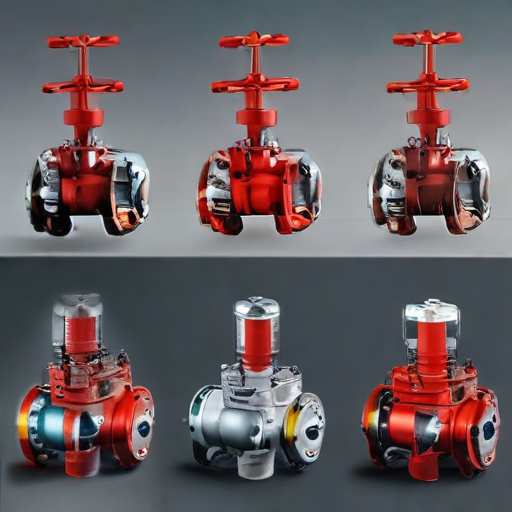
double block and bleed valves Accessories Upgrades and Custom Manufacturing Options
Double block and bleed (DBB) valves are essential components in various industrial processes, ensuring isolation and safety. To enhance their performance and adaptability, a range of accessories, upgrades, and custom manufacturing options are available.
Accessories:
1. Handwheels and Actuators: For ease of operation, DBB valves can be equipped with manual handwheels or automated actuators, including electric, pneumatic, or hydraulic types.
2. Lockout Devices: These accessories ensure safety by preventing unauthorized valve operation during maintenance.
3. Position Indicators: These provide real-time feedback on valve status, enhancing monitoring and control.
4. Dirt Excluders and Grease Injectors: These are vital for maintaining valve function in harsh environments by preventing contamination and ensuring proper lubrication.
5. Integral Tube Fittings: These simplify installation and enhance connectivity with existing piping systems.
Upgrades:
1. Material Enhancements: Upgrading to corrosion-resistant materials like Inconel, Hastelloy, or duplex stainless steel can extend the valve’s service life in aggressive environments.
2. Seal Improvements: Advanced sealing technologies, such as metal-to-metal seals or elastomeric seals with improved chemical resistance, can provide better performance under extreme conditions.
3. High-Temperature and High-Pressure Ratings: Customizing DBB valves to withstand higher temperatures and pressures broadens their applicability in more demanding scenarios.
4. Noise and Vibration Reduction: Incorporating features like noise attenuators or vibration dampeners can enhance the operational environment, ensuring safer and more efficient processes.
Custom Manufacturing Options:
1. Tailored Port Configurations: Valves can be custom-designed with specific port arrangements to meet unique process requirements.
2. Special Coatings and Finishes: Applying specialized coatings, such as PTFE or ceramic, to valve components can improve resistance to wear, corrosion, and fouling.
3. Customized Sizes and Dimensions: DBB valves can be manufactured to non-standard sizes and shapes to fit specific applications.
4. Integration with Monitoring Systems: Custom valves with built-in sensors and connectivity for integration with modern monitoring and control systems enhance operational insight and automation.
These enhancements and custom options allow DBB valves to be more versatile, reliable, and suited to a wide range of industrial applications.
List Quality Control and The Manufacturing Process of “double block and bleed valves”
Quality Control:
1. Material Verification: Ensures all raw materials meet specified standards.
2. Dimensional Inspection: Uses precision measuring tools to verify component dimensions.
3. Non-Destructive Testing (NDT): Includes radiographic, ultrasonic, and dye-penetrant testing to identify flaws.
4. Pressure Testing: Validates valve integrity under operational pressures, often using hydrostatic or pneumatic tests.
5. Functional Testing: Ensures valve performance, checking for leaks and operational smoothness.
6. Documentation Review: Ensures all certifications, testing reports, and material traceability documents are complete and accurate.
7. Third-party Inspection: Independent verification for compliance with industry standards and specific customer requirements.
8. Final Inspection: Comprehensive review before packaging to ensure quality and packaging integrity.
Manufacturing Process:
1. Design and Engineering:
– CAD modeling to draft precise valve designs.
– Finite Element Analysis (FEA) to simulate stress and performance under operational conditions.
2. Material Selection and Procurement:
– Choosing appropriate materials, typically stainless steel or carbon steel.
– Procuring standardized, certified raw materials.
3. Machining and Fabrication:
– CNC machining to create valve components like bodies, balls, and stems.
– Drilling, threading, and other specific machining processes for precise parts.
4. Assembly:
– Assembling components including seats, stems, and gaskets.
– Ensuring airtight seals and precise component alignment.
5. Welding (if required):
– High-quality welding for joining certain components.
– Post-weld heat treatment to relieve stresses.
6. Surface Treatment:
– Applying anti-corrosion coatings or surface treatments.
– Polishing or finishing to meet appearance and durability standards.
7. Testing and Inspection:
– Subjecting the assembled valve to various quality control tests as described.
8. Cleaning and Packaging:
– Chemical cleaning to remove contaminants.
– Packaging to protect the valve during transportation and handling.
This streamlined approach ensures double block and bleed valves meet stringent quality and performance criteria essential for safe and reliable operation.
How to use “double block and bleed valves”
A double block and bleed (DBB) valve is used to isolate a section of a pipeline or system to ensure complete shutoff and prevent contamination or leakage. Here’s a simplified guide on how to use it:
1. Preparation: Before operating the DBB valve, ensure the system pressure and specifications are within the valve’s operational limits. Review safety protocols and wear appropriate personal protective equipment (PPE).
2. Shutdown: If the system is active, gradually shut down the primary flow to reduce pressure and prevent sudden surges that could damage the valve or system.
3. Primary Isolation: Operate the first block valve (primary isolation valve) by turning the handle or operating the actuator to the closed position. This blocks the main flow of fluid from the upstream side.
4. Secondary Isolation: Similarly, operate the second block valve (secondary isolation valve) to the closed position. This ensures that both upstream and downstream sides are isolated from the section of the pipeline you need to work on.
5. Bleed Valve Operation: Open the bleed valve located in between the two block valves. This allows any residual fluid trapped between the two block valves to be vented out, either into a drain or a containment system, ensuring there is no pressure between the valves.
6. Verification: Confirm that no fluid is leaking from the block valves and that the system section is depressurized and safely isolated.
7. Maintenance or Inspection: Perform the necessary maintenance or inspection tasks on the isolated section.
8. Reactivation: After completing the required work, close the bleed valve first to prevent any unnecessary leakage. Then open the secondary and primary block valves in sequence to restore system flow.
By following these steps, you ensure safe and effective use of double block and bleed valves to maintain system integrity and safety.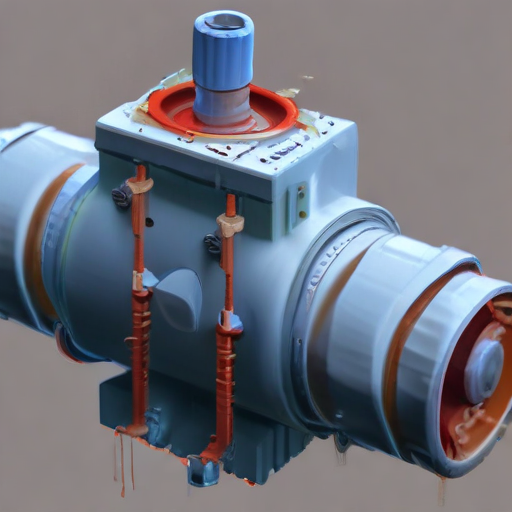
“double block and bleed valves” Comparative Analysis
Double block and bleed (DBB) valves are critical components in various industries for isolating sections of pipelines, ensuring integrity, and enhancing safety. Their design typically involves two isolation valves and a bleed valve, enabling system isolation and pressure release for maintenance, testing, and operational flexibility. However, understanding the comparative nuances among different types and configurations of these valves is important to select the most appropriate one for specific applications.
Types of DBB Valves
1. Ball Valves: Ball-type DBB valves use spherical elements to achieve closure. They offer high durability and can handle high-pressure and high-temperature environments. They provide reliable sealing but can be bulkier and heavier compared to other types, thus may not be ideal for space-constrained applications.
2. Gate Valves: Gate-type DBB valves use a flat gate to control flow. They are suited for applications requiring infrequent operation but may be susceptible to wear over time, impacting their sealing capability. They are generally lower in cost compared to ball valves but slower to actuate.
3. Plug Valves: These utilize a cylindrical or conically-tapered plug to control flow. Plug-like DBB valves offer a compact design and good sealing properties but may require more maintenance due to potential wear and lubrication needs. They are excellent for corrosive and demanding environments.
4. Needle Valves: Needle-type DBB valves allow for precision flow control with fine adjustments, often used in applications requiring meticulous system regulation. However, they are typically suited for lower flow rates and not for applications requiring quick shutoff.
Design Considerations
– Size and Weight: For offshore or space-constrained installations, compact designs like plug or needle valves might be preferable.
– Operating Conditions: For high-pressure and high-temperature scenarios, ball or gate valves offer robust performance.
– Maintenance and Longevity: Ball and plug valves generally require less frequent maintenance compared to gate valves but need careful consideration regarding wear and lubrication.
Cost
Cost considerations vary significantly. Ball and gate DBB valves can be more expensive upfront but may provide cost efficiency in the long term due to their durability. Conversely, plug and needle valves might offer initial savings but could entail higher maintenance costs.
In summary, the choice of DBB valve in any given application should align with specific operational requirements, environmental conditions, and cost analysis to ensure optimal performance and safety.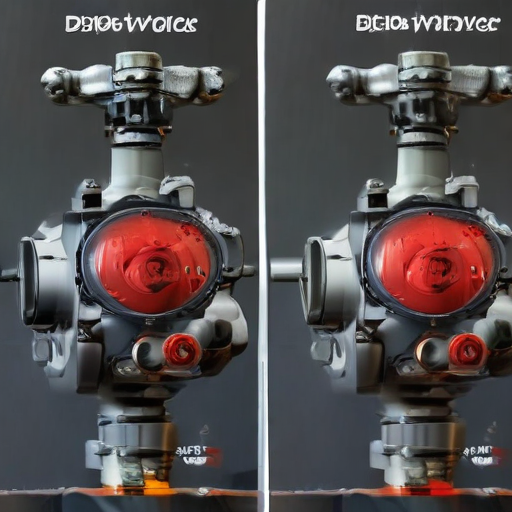
“double block and bleed valves” Warranty and Support
When it comes to double block and bleed valves, warranty and support are crucial factors to consider. Most reputable manufacturers offer a robust warranty that typically spans 12 to 24 months from the date of purchase or installation. This warranty generally covers defects in materials and workmanship, ensuring that the product operates as intended under normal usage conditions.
Support services are equally important for maintaining the valve’s performance and longevity. Manufacturers usually provide comprehensive customer support, including technical assistance, troubleshooting, and access to replacement parts. Some companies offer 24/7 support helplines and online resources such as manuals, FAQ sections, and video tutorials to help users get the most out of their valves.
In addition to basic warranty and support, many manufacturers also offer extended service contracts or maintenance agreements. These services can include periodic inspections, on-site repairs, and performance assessments to ensure the valves continue to operate efficiently and safely. Such agreements often come at an additional cost but provide peace of mind and can extend the lifespan of the product.
It’s essential to thoroughly read the warranty terms, including any exclusions or conditions that could void the warranty, such as improper installation or misuse. Always opt for a manufacturer with a strong reputation for customer support to ensure you can quickly resolve any issues that may arise.
To summarize, double block and bleed valves typically come with a 12 to 24-month warranty covering material and workmanship defects. Comprehensive customer support and optional extended service agreements further ensure the valve’s optimal performance and durability. Always choose a reputable manufacturer to maximize the reliability and lifespan of your valve.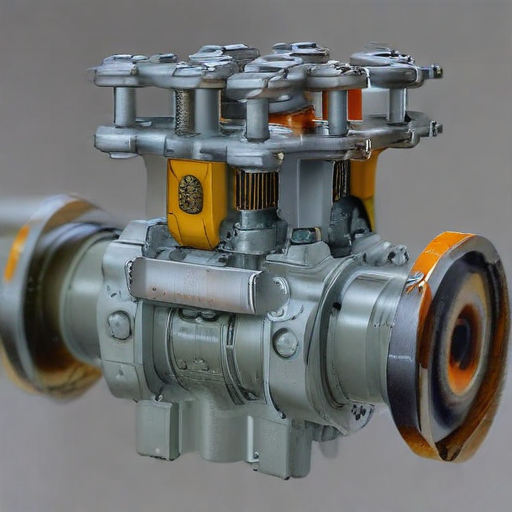
List “double block and bleed valves” FAQ
Double Block and Bleed Valves FAQ
1. What is a Double Block and Bleed (DBB) Valve?
A DBB valve is a type of valve that has two seating surfaces that create a seal against pressure from both sides of the valve when in the closed position, and it includes a bleed mechanism to ensure that no pressure is left between the two block valves.
2. How does a DBB valve work?
In the closed position, the two isolation valves (“block”) stop the flow from both upstream and downstream, and the bleed valve in the middle drains the cavity between these isolation points. This ensures no leakage passes through.
3. What are the main applications of DBB valves?
Commonly used in the oil and gas industry, chemical processing, and in applications requiring the safe isolation of hazardous fluids. They are essential for maintenance, testing, and ensuring systems are depressurized safely.
4. Why choose a DBB valve over separate block and bleed valves?
A DBB valve provides a more compact, efficient, and cost-effective solution. It reduces the space required and minimizes the potential for leaks compared to using separate block valves and a bleed valve.
5. What are the types of DBB valves?
– Ball Valve DBB: Uses ball-type shut-off mechanisms.
– Plug Valve DBB: Employs rotating plugs to control flow.
– Gate Valve DBB: Utilizes gate-like structures to block flow.
– Needle Valve DBB: Features a small orifice for fine control in low-flow applications.
6. What materials are DBB valves made from?
Common materials include stainless steel, carbon steel, and various alloys, depending on the application’s requirements such as pressure, temperature, and corrosiveness.
7. How do you install a DBB valve?
It must be installed ensuring correct alignment and support to handle system pressures. Follow manufacturer guidelines for installation torque and support to avoid stress on the piping system.
8. What maintenance is required for a DBB valve?
Regular inspection for leaks, wear, and corrosion is essential. Periodically test the bleed mechanism to ensure it operates correctly. Replacement of seals and other components might be required based on usage and environmental conditions.
Top 10 FAQ with answer about double block and bleed valves for Buyer Sourcing from China
Certainly! Here are the top 10 FAQs about double block and bleed valves for buyers sourcing from China, with concise answers:
1. What are double block and bleed (DBB) valves?
DBB valves are designed to block the flow from both upstream and downstream sides while allowing the cavity between them to be bled off. They provide isolation for safe maintenance, inspection, and operation.
2. Why source DBB valves from China?
China offers competitive pricing, advanced manufacturing technologies, and a robust supply chain. Many Chinese manufacturers adhere to international standards, ensuring quality products at lower costs.
3. What standards should DBB valves meet?
Common standards include API 6D, ASME B16.34, ISO 14313, and PED 2014/68/EU. Ensure the manufacturer complies with relevant standards that match your project’s requirements.
4. How do I verify a Chinese supplier’s credibility?
Check certifications (ISO, API), request quality assurance documentation, read customer testimonials, and consider third-party audits. Using sourcing platforms with verified suppliers can also help.
5. What materials are DBB valves made from?
Typical materials include stainless steel, carbon steel, duplex steel, and other alloys. Material selection depends on the operating environment and fluid compatibility.
6. What sizes and pressure ratings are available?
DBB valves come in various sizes (typically from 1/2″ to 36″) and pressure ratings (150 to 2500 class). Ensure the supplier offers valves that match your specific requirements.
7. Can Chinese manufacturers provide custom solutions?
Yes, many Chinese manufacturers offer customized DBB valves tailored to specific needs. Provide detailed specifications and requirements for accurate customization.
8. What is the typical lead time for DBB valves?
Lead times can vary from 4 to 12 weeks depending on order complexity, quantity, and customization needs. Discuss timelines upfront with your supplier.
9. How are quality control and assurance handled?
Reputable manufacturers follow stringent quality control processes, including material inspection, dimensional checks, hydrostatic testing, and NDE (Non-Destructive Examination).
10. What are the shipping and logistics considerations?
Confirm the Incoterms (e.g., FOB, CIF) with your supplier. Consider logistics costs, customs clearance, and import duties. Partner with a reliable shipping company to ensure smooth delivery.
This concise FAQ list aims to help you navigate the sourcing process efficiently when procuring double block and bleed valves from China.

